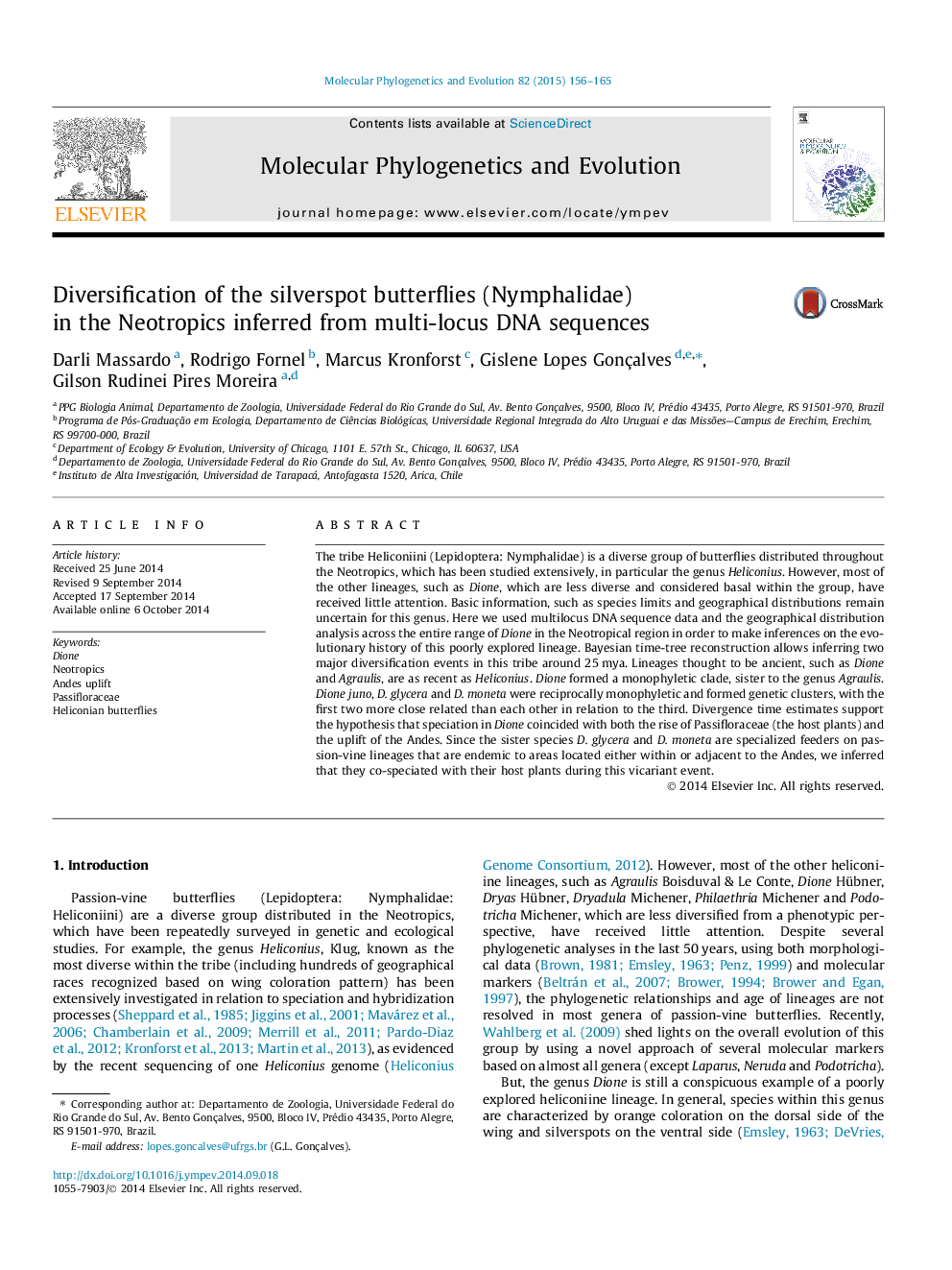| کد مقاله | کد نشریه | سال انتشار | مقاله انگلیسی | نسخه تمام متن |
|---|---|---|---|---|
| 5919021 | 1164256 | 2015 | 10 صفحه PDF | دانلود رایگان |

• Bayesian time-tree of passion vine butterflies showed a speciation pattern of two major groups dated of 25 mya.
• Dione is a recent (ca. 10 my) and monophyletic lineage, sister of Agraulis. Species of Dione are reciprocally monophyletic.
• Different markers and reconstruction methods resulted in distinct relationships at intraspecific level of Dione.
• The emergence of Dione is concurrent with both the rise of Passifloraceae and also coincides with the uplift of the Andes.
The tribe Heliconiini (Lepidoptera: Nymphalidae) is a diverse group of butterflies distributed throughout the Neotropics, which has been studied extensively, in particular the genus Heliconius. However, most of the other lineages, such as Dione, which are less diverse and considered basal within the group, have received little attention. Basic information, such as species limits and geographical distributions remain uncertain for this genus. Here we used multilocus DNA sequence data and the geographical distribution analysis across the entire range of Dione in the Neotropical region in order to make inferences on the evolutionary history of this poorly explored lineage. Bayesian time-tree reconstruction allows inferring two major diversification events in this tribe around 25 mya. Lineages thought to be ancient, such as Dione and Agraulis, are as recent as Heliconius. Dione formed a monophyletic clade, sister to the genus Agraulis. Dione juno, D. glycera and D. moneta were reciprocally monophyletic and formed genetic clusters, with the first two more close related than each other in relation to the third. Divergence time estimates support the hypothesis that speciation in Dione coincided with both the rise of Passifloraceae (the host plants) and the uplift of the Andes. Since the sister species D. glycera and D. moneta are specialized feeders on passion-vine lineages that are endemic to areas located either within or adjacent to the Andes, we inferred that they co-speciated with their host plants during this vicariant event.
Figure optionsDownload as PowerPoint slide
Journal: Molecular Phylogenetics and Evolution - Volume 82, Part A, January 2015, Pages 156–165